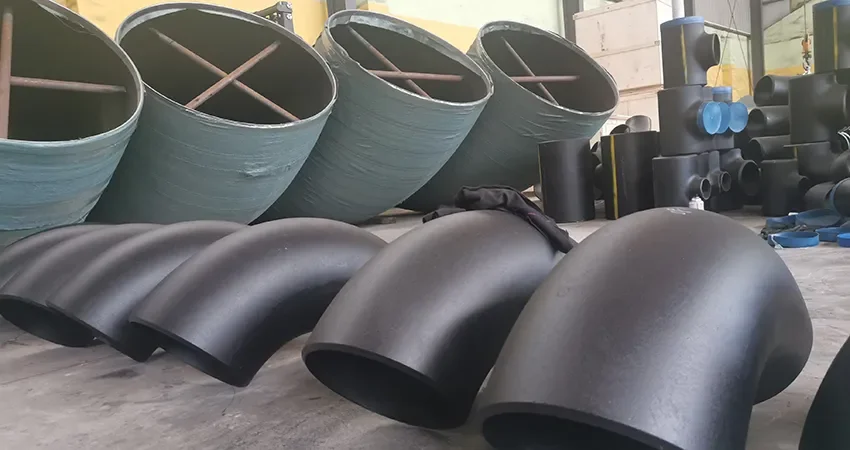
High-strength Elbows For Corrosion-resistant Pipeline Connections
Large diameter elbows provide durable, corrosion-resistant connections for industrial piping, ensuring reliable flow in high-pressure applications like boiler pipeline protection and petrochemical systems.
High-strength Elbows For Corrosion-resistant Pipeline Connections
Large diameter elbows provide durable, corrosion-resistant connections for industrial piping, ensuring reliable flow in high-pressure applications like boiler pipeline protection and petrochemical systems.
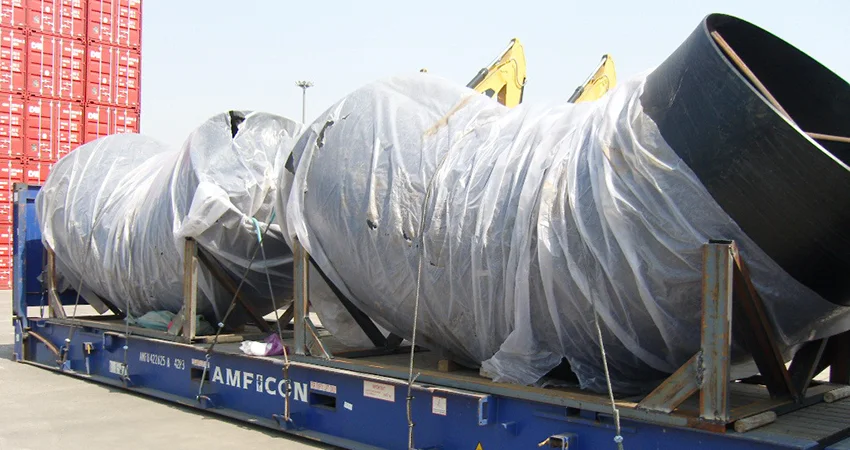
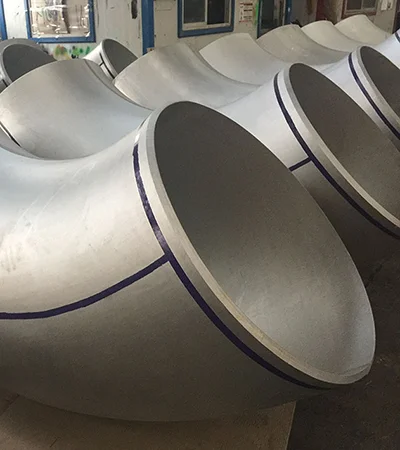
Large Diameter Elbow is a key pipe fitting designed for industrial piping systems, enabling smooth directional changes in pipelines with diameters above DN400 (16 inches). Compliant with ASME B16.9, ASTM, and API standards, these elbows are available in 45°, 90°, and 180° configurations, offering exceptional corrosion resistance and durability for boiler pipeline protection and high-pressure applications. Crafted from materials like carbon steel (ASTM A234 WPB), stainless steel (A403 WP304/316L), or alloy steel (A234 WP11/WP22), they are engineered to withstand harsh conditions in industries such as oil and gas, petrochemical, power generation, and marine systems.
Large diameter elbows are manufactured using hot-forming, cold-forming, or welding processes, available in seamless or welded (bevel straight seam or spiral-welded) constructions. They come in long radius (LR, R=1.5D) and short radius (SR, R=1.0D) designs, optimizing flow efficiency and minimizing turbulence in high-flow systems. Surface treatments like 3LPE, FBE, or galvanizing enhance corrosion resistance, protecting against pipeline wear in applications involving corrosive fluids, abrasive slurries, or high-temperature gases. Sizes range from DN400 to DN2000, with wall thicknesses from SCH 10 to SCH XXS, and pressure ratings up to 2500 psi.
These elbows undergo rigorous testing, including hydrostatic, ultrasonic, and radiographic inspections, to ensure compliance with industry standards. With tensile strengths of 415-585 MPa (A234 WPB) and yield strengths of 240 MPa, they perform reliably under high-pressure and high-temperature conditions (up to 600°C). The butt-weld or seamless design ensures a secure, leak-proof connection, critical for high-pressure elbow applications in boiler pipeline protection, refineries, and offshore pipelines. Installation requires precise beveling, alignment, and welding to maintain structural integrity.
Compared to smaller elbows or threaded fittings, large diameter elbows are tailored for large-scale systems, offering superior strength and adaptability for complex piping layouts. Their ability to handle abrasive materials, such as ash or slurries, makes them ideal for pneumatic conveying systems, while their corrosion-resistant properties suit chemical plants and subsea applications. Long radius elbows reduce flow resistance, while short radius elbows are preferred in space-constrained environments, providing versatile pipeline wear solutions.
Large diameter elbows address challenges like pipeline corrosion, thermal stress, and wear in demanding industrial environments. Their robust construction, compliance with stringent standards, and material versatility make them a preferred choice for engineers seeking reliable solutions for industrial piping. Whether used in high-pressure boiler systems, petrochemical plants, or offshore pipelines, these elbows deliver exceptional performance, safety, and longevity.
| Feature | Large Diameter Elbow | Socket Weld Elbow | Threaded Elbow |
|---|---|---|---|
| Material Type | Carbon/Stainless/Alloy Steel | Carbon/Stainless Steel | Carbon/Stainless Steel |
| Connection Type | Butt Weld/Seamless | Socket Weld | Threaded |
| Corrosion Resistance | Excellent (Coatings available) | Good (Coatings needed) | Moderate |
| Applications | High-Pressure, Large-Scale | Small-Diameter Systems | Low-Pressure Systems |
| Tensile Strength (MPa) | 415-585 (min) | 415-515 (min) | 415-485 (min) |
| Installation Complexity | Moderate (Welding required) | Low (Socket insertion) | Low (Threaded connection) |
| Key Advantage | High-pressure durability | Ease of installation | Easy maintenance |
Commonly used for smooth flow direction change. Radius = 1.5 × Nominal Pipe Size (NPS).
Used where space is limited. Radius = 1 × NPS, higher pressure drop compared to LR elbows.
Changes flow direction by 45°. Reduces friction and pressure loss, ideal for fluid systems.
Used to reverse flow direction. Available in long and short radius, mainly in heat exchangers & furnaces.
ASME/ANSI B16.9 – Factory-Made Wrought Steel Buttwelding Fittings
ASTM A234 / A403 – Materials
MSS SP-43 / SP-75 – Stainless & high-strength fittings
• Size: ½″ to 48″ NPS
• Pressure Ratings: SCH 10 – SCH 160
• Materials: Carbon Steel, Stainless, Alloy Steel
• Ends: Beveled (BW), Socket Weld, Threaded
Pipe Elbow fittings are critical components in industrial piping systems, designed to redirect flow with exceptional corrosion resistance and erosion resistance. Our seamless alloy steel elbows, compliant with ASME B16.9 standards, are engineered for high-pressure and high-temperature environments, making them ideal for boiler pipeline protection in refineries, petrochemical plants, and power generation facilities.
Manufactured using hot-rolling or cold-drawing processes, these seamless alloy elbows undergo precise heat treatment to optimize mechanical properties. The alloy composition, featuring high chromium and molybdenum content, enhances oxidation resistance, creep strength, and durability against abrasive materials. This makes them perfect for handling corrosive fluids, gases, and abrasive slurries in industrial piping systems. Available in angles like 90°, 45°, and 22.5°, with long-radius (1.5D) and short-radius (1D) options, our elbows cater to diverse pipeline configurations.
Our pipe elbows support bending, flanging, and welding, with recommended preheating (150-200°C) and post-weld heat treatment (650-700°C) to ensure weld integrity. Available in sizes from 1/2” to 24” (DN15 to DN600) and wall thicknesses from SCH 40 to SCH 160, they meet the demands of complex piping systems. Rigorous testing, including tensile, flattening, and hydrostatic tests, ensures compliance with industry standards, guaranteeing reliability in extreme conditions up to 650°C.
With surface treatments like 3LPE or FBE coatings, these elbows offer enhanced corrosion resistance, making them suitable for oil and gas pipelines, chemical processing, and pneumatic conveying systems. Compared to standard carbon steel elbows, our alloy steel elbows provide superior resistance to hydrogen sulfide corrosion and stress cracking, ensuring long-term performance in harsh environments.
For engineers seeking reliable boiler pipeline protection and durable industrial piping solutions, our seamless alloy elbows deliver unmatched strength, safety, and longevity, addressing challenges like pipeline wear, corrosion, and thermal stress in high-throughput systems.
| Feature | Seamless Alloy Elbow | Carbon Steel Elbow | Stainless Steel Elbow |
|---|---|---|---|
| Material Type | Ferritic Alloy Steel | Carbon Steel | Stainless Steel |
| Temperature Range | High (up to 650°C) | Moderate (up to 427°C) | High (up to 870°C) |
| Corrosion Resistance | Excellent (High Cr/Mo) | Moderate (With coatings) | Superior (Austenitic) |
| Erosion Resistance | Excellent | Good | Moderate |
| Applications | Boilers, Petrochemical, Refineries | General Piping, Oil/Gas | Food Processing, Marine |
| Tensile Strength (MPa) | 415 (min) | 415 (min) | 515 (min) |
| Yield Strength (MPa) | 205 (min) | 240 (min) | 205 (min) |
| Key Advantage | High-temp corrosion resistance | Cost-effective for general use | Superior corrosion resistance |
High chromium content ensures protection against rust and corrosive fluids.
Durable alloy steel withstands wear from abrasive slurries.
Ideal for high-temperature boiler systems and industrial applications.
Supports welding and bending for flexible pipeline configurations.
Long lifespan reduces maintenance and replacement costs.
Superior tensile strength for demanding industrial piping systems.
Formed by hot pressing or forging, directly welded to pipe with beveled ends for full penetration weld. Suitable for high pressure & high temperature pipelines.
Features a socket at the end where the pipe is inserted before welding. The actual end diameter is slightly larger than pipe OD for proper fit.
Similar to socket weld elbows but with threads inside for easy installation & removal. Ideal for repair and maintenance work in low/medium pressure pipelines.
ASTM A403 WP Gr. 304, 304H, 309, 310, 316, 316L, 317L, 321, 347, 904L
ASTM A234 WPB, WPBW, WPHY 42, 46, 52, 60, 65, 70
ASTM A420 WPL3, A420 WPL6
ASTM / ASME A/SA 234 Gr. WP 1, 5, 9, 11, 12, 22, 91
ASTM A815 / ASME SA815, UNS S31803, S32205, Werkstoff No. 1.4462
ASTM / ASME SB336: UNS 2200 (Nickel 200), 2201 (Nickel 201), 4400 (Monel 400), 8020 (Alloy 20), 8825 (Inconel 825), 6600 (Inconel 600), 6601 (Inconel 601), 6625 (Inconel 625), 10276 (Hastelloy C276)
A curated list of long-tail keywords for seamless alloy pipe elbows, covering specifications, applications, and material properties, presented in a multi-column layout.
Note: ASME B16.9 covers seamless alloy pipe elbows for high-temperature and corrosion-resistant applications. For detailed specifications, refer to the ASME B16.9 standard or contact a certified supplier.

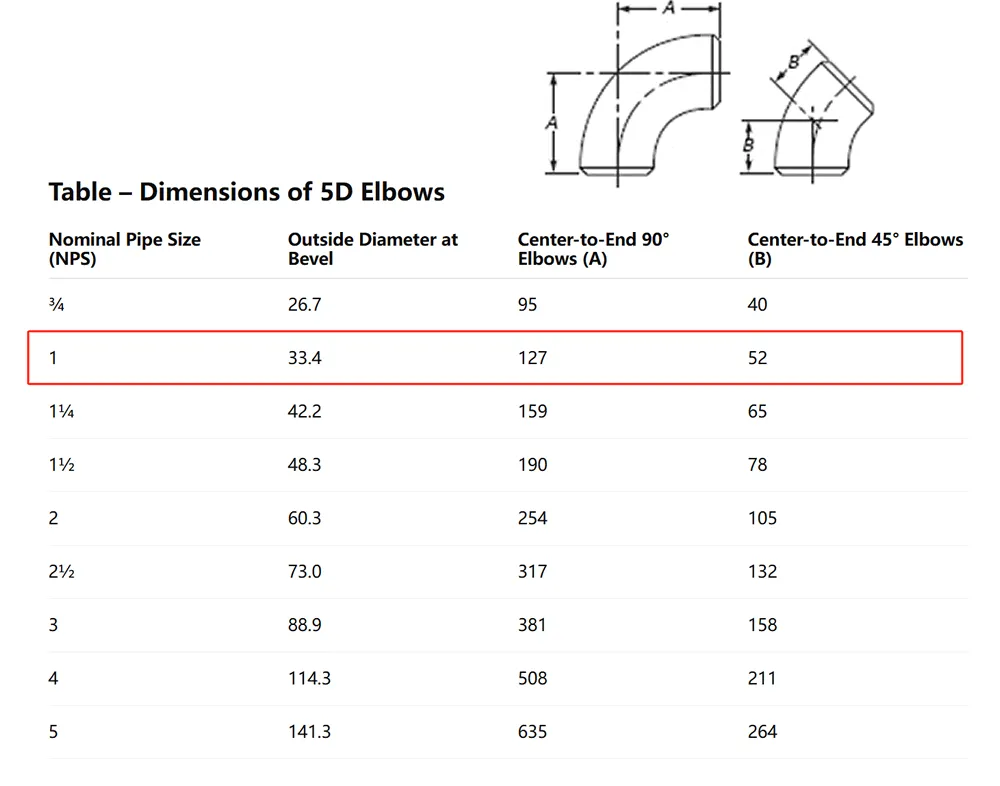
Pipe fitting dimensions are in either metric or Standard English. Common fittings include 90° long radius, 45° elbows, and 180° return bends. LR and SR elbows are widely used in heating and cooling units.
Define requirements for design, fabrication, materials, tests, and inspection of piping systems.
Provide design and construction rules for pipe fittings, adapters, flanges, sleeves, elbows, tees, valves, etc.
| Carbon Steel | A234 WPB (A & C available) |
| High Yield Carbon | Enhanced strength properties |
| Stainless Steel | 304, 316 (SCH 10 common) |
| Nickel Alloys | Specialized applications |
| ASME B16.9 | Factory-Made Wrought Steel |
| ASME B16.28 | Short Radius Elbows |
| ASME B16.25 | Buttwelding Ends |
| MSS SP-97 | Welding End Standards |
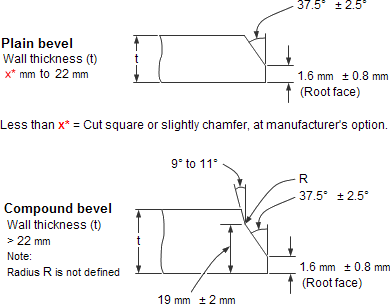
Plain Bevel and Compound Bevel
All welded pipe fittings have beveled ends to allow for ease of welding. This bevel allows for full penetration weld in most cases.
Welding Bevel acc. to
Butt weld pipe fitting bevels provide reliable, high-strength connections for demanding industrial piping applications.
|
DIN Standard German Industrial Standard |
EN Standard European Norm (CEN) |
ASME Standard American Society of Mechanical Engineers |
|---|---|---|
Low-Carbon & Low-Temp Steel
|
Low-Carbon & Low-Temp Steel
|
Low-Carbon & Low-Temp Steel
|
Low-Alloy High-Strength Steel
|
Low-Alloy High-Strength Steel
|
Low-Alloy High-Strength Steel
|
Molybdenum Steel (High-Temp)
|
Molybdenum Steel (High-Temp)
|
Molybdenum Steel (High-Temp)
|
Cr-Mo Steel (Medium Cr Content)
|
Cr-Mo Steel (Medium Cr Content)
|
Cr-Mo Steel (Medium Cr Content)
|
High Cr-Mo-V Steel (Super High-Temp)
|
High Cr-Mo-V Steel (Super High-Temp)
|
High Cr-Mo-V Steel (Super High-Temp)
|

Industries Using
Large Diameter Elbow components that are used to connect, join, or adapt different parts of a system, such as pipes, tubes, or hoses. They serve multiple purposes, including:
The choice of fittings depends on the specific requirements of the system, including factors like the type of fluid or gas, pressure, temperature, and the layout of the piping or tubing system.
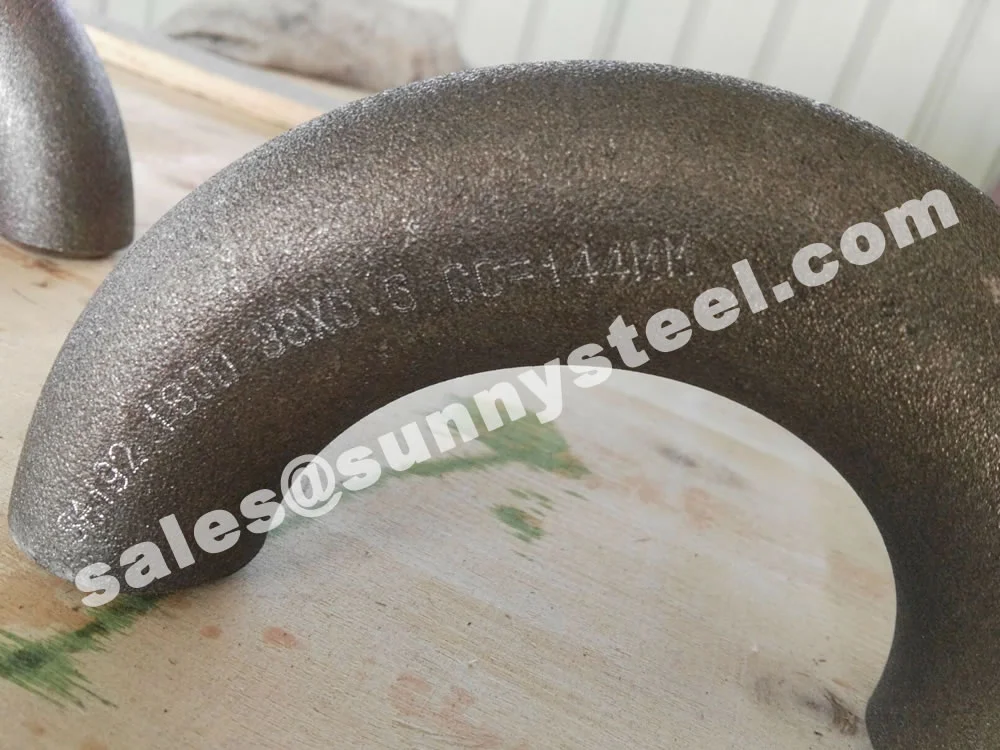
Astm a192 carbon steel elbows are specialized pipe...
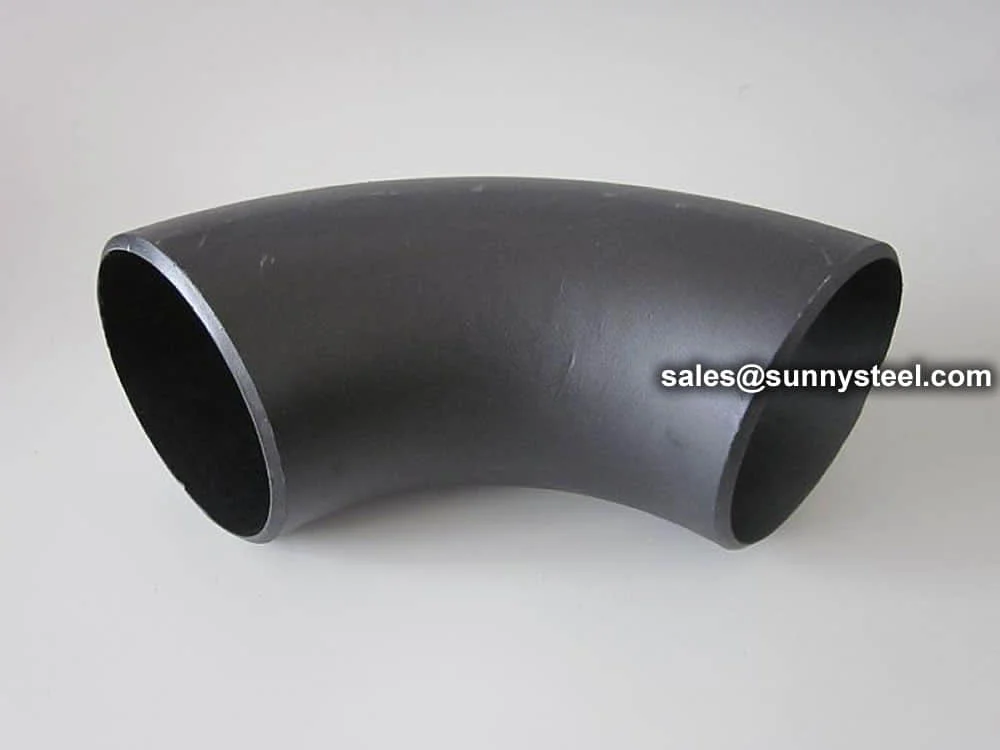
In a long radius elbow, the centreline radius is 1...
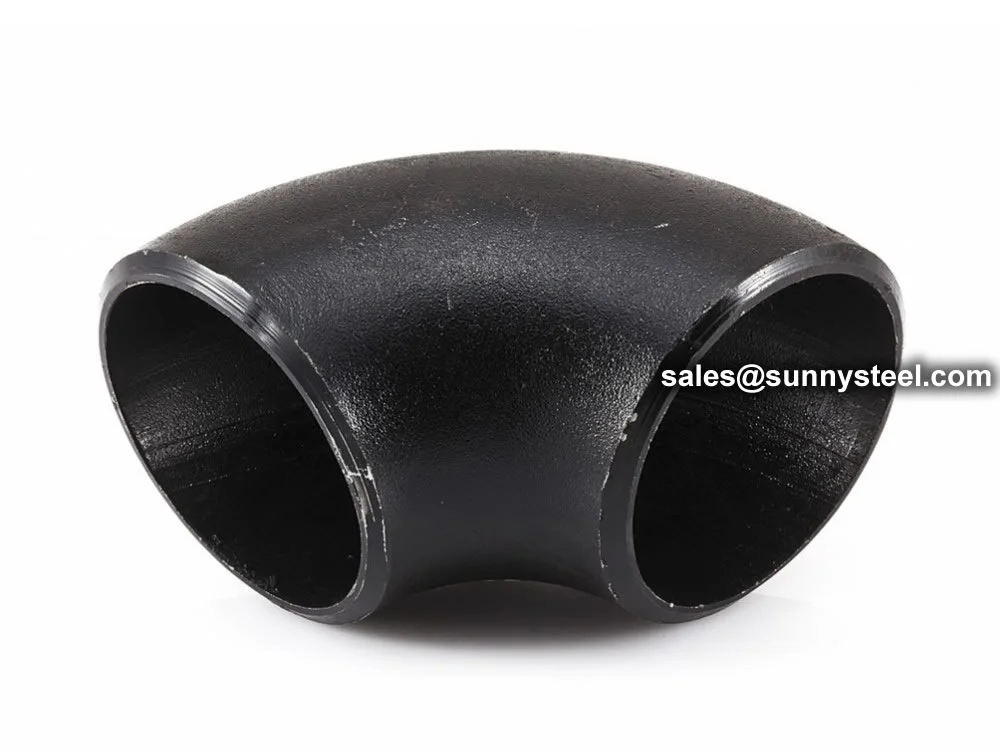
Discover short-radius elbows designed for corrosio...
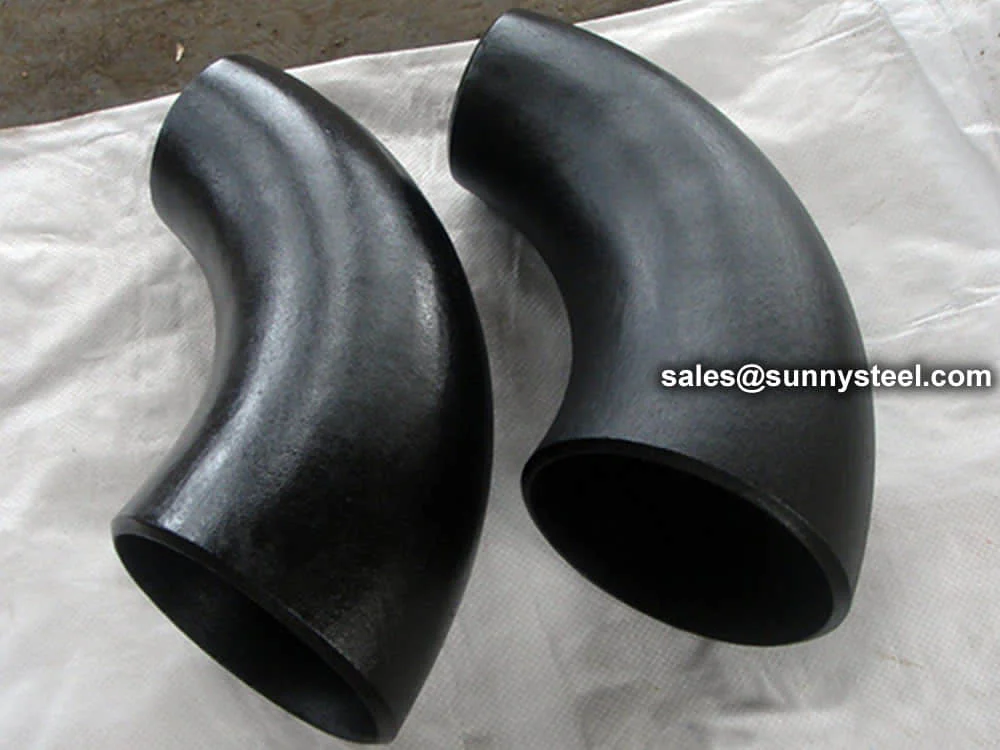
A Reducer Elbow is a fitting used to join two diff...
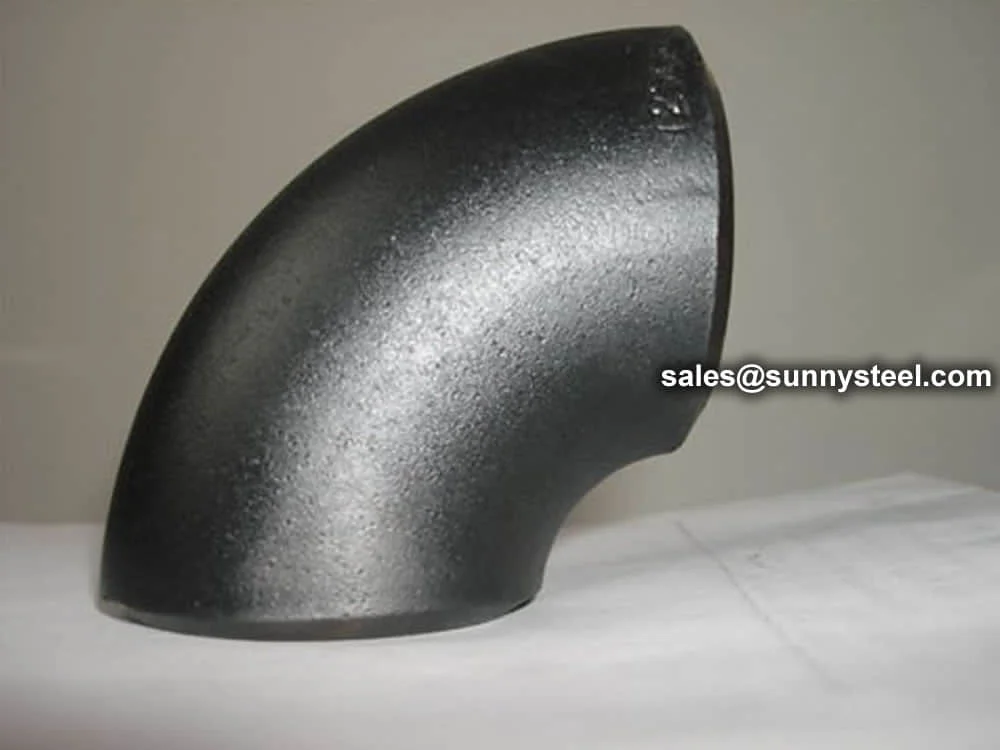
Explore our high-quality astm a420 wpl6 elbows des...
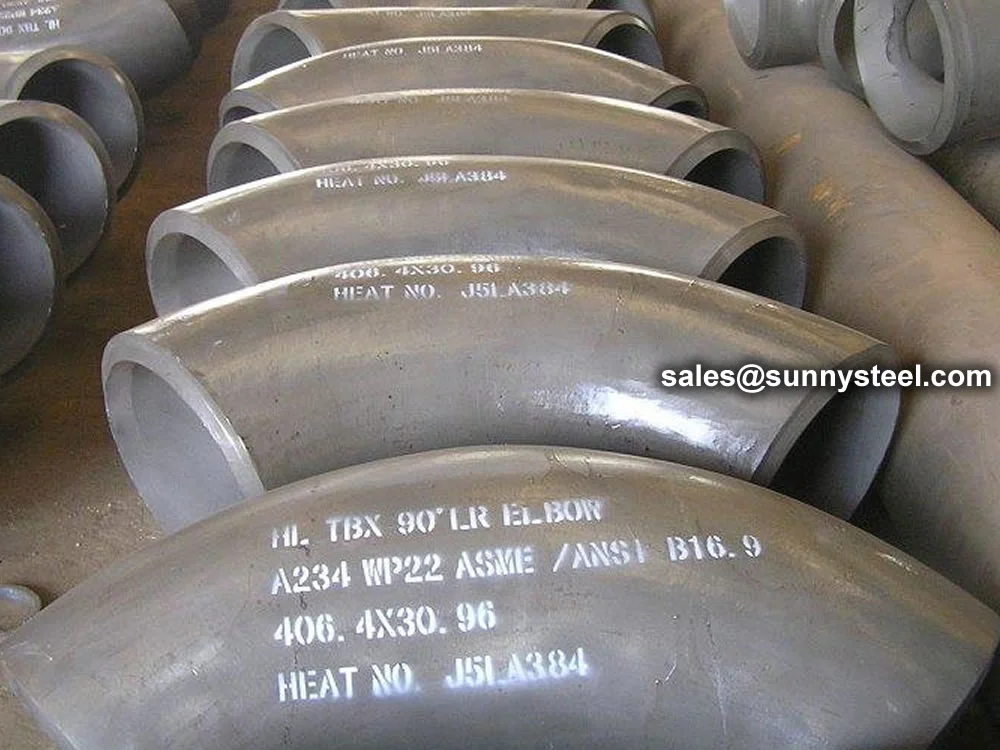
Explore astm a234 wp22 elbows designed for corrosi...